10 Unique and Unusual things to see in Egypt
We all know what Egypt is famous for right? The Giza Pyramids, the Valley of the Kings, Abu Simbel, Karnak Temple, Hatchepsut’s temple, Nile Cruises…the list goes on. All these places and activities are usually swarming with tourists, guides and of course… the good old Egyptian local hassler who wants to take you to his cousin’s papyrus shop. What if we told you there are sites that are just as amazing, but hardly anyone visits them? Places you can have all to yourself, where you can get an authentic experience of Egypt’s unrivalled past? Sound too good to be true? Well, we can assure you it isn’t. Read on for our guide to just a few of the most unique and unusual things to see in Egypt.
The Valley of the Kings
Yes, we know this is a staple of any trip to Egypt. Everyone visits this place. It’s on every tour and every traveller to Egypt’s bucket list. However, you will find that there is more to the Valley of the Kings than just the standard tombs your guide will often take you to. The standard tombs being Ramses I, Ramses III and Ramses IX. The Valley of the Kings is literally honeycombed with the tombs of the pharaohs and most guides choose to take their tourists to these three tombs. Don’t get us wrong they are spectacular, but if you want something more authentic you might want to break away from your group and visit some other tombs.
Tomb of Thutmose III: Want to feel like Indiana Jones? This tomb is located in a cliff face, right at one of the valley’s extremities and reachable via an almost vertical ladder in the cliff face. Thutmose III was Egypt’s ‘warrior pharaoh’ also known as the ‘Napoleon of Egypt’. He died in battle midway through his tombs construction and the tomb was hastily finished. The frescoes on the wall, all scenes from the book of the dead are all still in line drawings. If you look closely at the plaster on the walls of this tomb, you can actually still see the fingerprints of the ancient craftsman. To think, this is all that is left of someone is mind blowing. This tomb is unique in the Valley of the Kings as it contains a sarcophagus that is shaped like a cartouche, the Egyptian sacred ropes used to encircle and protect the name of the king. The burial chamber itself has also been carved in this shape.
Tomb of Siptah: This one is one of the most unique and unusual things to see in Egypt, just for the experience of it. The pharaoh Siptah was disabled, which is quite unique as far as Egyptian kings go. The pharaohs were seen as god’s representative on Earth, so it is interesting that Siptah became pharaoh at all. It is also interesting to visit his tomb for the same reason. What makes this tomb unusual is its lack of visitors. The tomb is quite deep underground and while not very colourful, the profound silence within the tomb is an experience in itself. People have spoken of how they can hear the beating of their own heart and even the blood rushing through their veins it is so quiet.
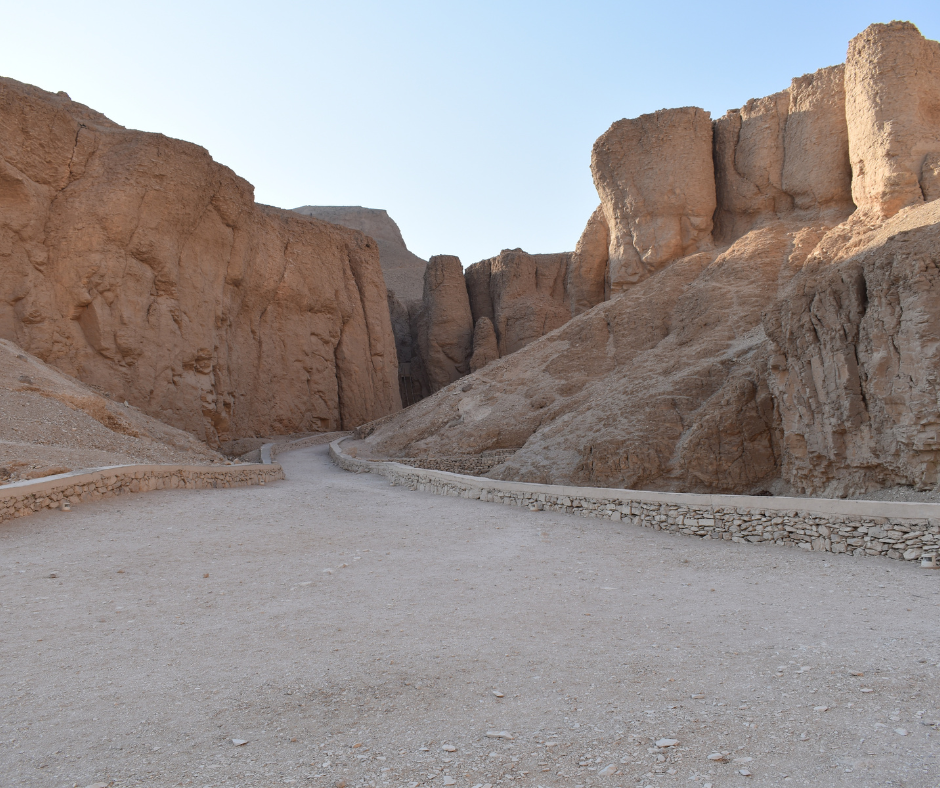
Tomb of Tutankhamen: Ok so we know Tutankhamen is probably Egypt’s most famous pharaoh due to the basically undisturbed discovery of his tomb in 1912 by Howard Carter. However, you would be surprised at how few people visit his tomb on the recommendation of their guides not to do so. The key reason they give is that it’s small and there is an additional fee payable on top of the entrance to the Valley of the Kings which includes three tombs. The tomb itself is a big part of history, both ancient and modern and we would highly recommend a visit. It is very colourful and the burial chamber shows the most prominent scenes from the Book of the Dead on its walls.
Tomb of Seti I: This is the piece de resistance of the valley and like the Tomb of Tutankhamen is not included on the standard entrance ticket. The tomb of Seti I, father of Ramses the Great is the longest and most spectacular of all of Egypt’s royal tombs. The tomb is 137 metres long and every wall of every room is covered with elaborate scenes from the Book of the Dead. The tomb has only recently been reopened for viewing and its relative obscurity and cost to enter keep most travellers from visiting. Be warned there is a hefty fee to visit this amazing tomb – but never fear if you would like to visit, the tomb of Seti I is included as standard on our ‘Invaders, Traders & Pyramid Builders’ – Archaeology trip to Egypt.
Dahshour
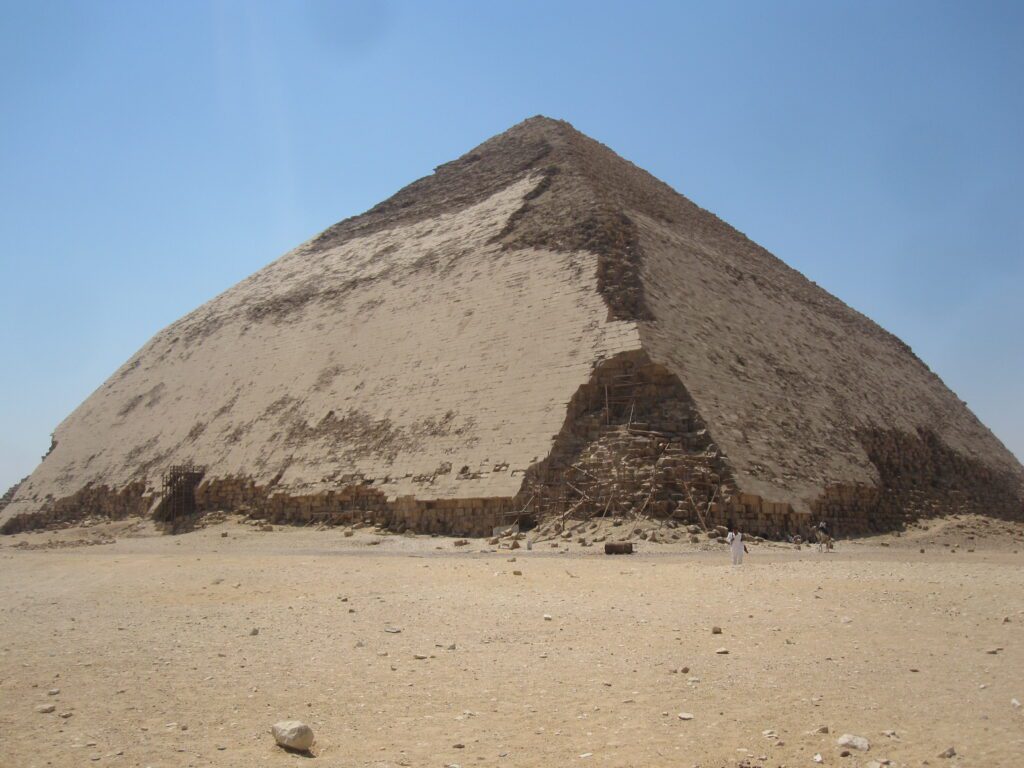
The site of Dahshour is located just outside Cairo within a stone’s throw from the Old Kingdom necropolis of Saqqara. We are just perplexed as to why this amazing place gets so little attention from tourists and travellers. Many people think that the Great Pyramid is Egypt’s first true pyramid, but this isn’t true. The first true pyramid was built by the father of Khufu (builder of the Great Pyramid). King Snefru built what is known today as the Red Pyramid, which sits in the desert at Dahshour virtually abandoned. You can buy a ticket to enter the pyramid and clamber down its deserted corridor to the burial chamber completely free from other travellers.
Another one of Egypt’s unique and unusual sites is the so-called ‘Bent Pyramid’ also built by King Snefru. The incline of the pyramid changes halfway up, possibly due to the instability of either the foundation or due to the initial incline being too steep. We love the Bent Pyramid because it puts to rest the notion that the pyramids were built by extra-terrestrials, who we are sure wouldn’t have come thousands of light years just to leave behind this mistake pyramid.
Both Snefru’s pyramids now lie deserted in the desert. This gives the few visitors who do venture here a unique and authentic experience of exploring pyramids away from the crowds, touts and relentless camel drivers of Giza. The encroachment of modern Cairo, especially the suburb of Giza, a relatively crappy area if you ask a local, often also leads to disappointment among travellers visiting the last remaining wonder of the world. Travellers often picture themselves visiting the pyramids in the vast expanse of the desert, although this is far from the experience you get at Giza, this is the experience that awaits those who venture to the sands of Dahshour.
Siwa Oasis
Egypt is a desert. We all know this right? Well with the desert often comes beautiful desert oases and Siwa is Egypt’s most remote and also the most stunning. Siwa is home to a veritable myriad of our unique and unusual things to see in Egypt. Siwa is an ancient place, and it was said by Plutarch, in his ‘Life of Alexander’, that Alexander the Great journeyed to Siwa to visit the ‘Temple of the Oracle’ where a soothsayer proclaimed him the true son of Zeus. Today, the ‘Temple of the Oracle’ still stands, and you can walk in the footsteps of Alexander and stand in the room in which he was proclaimed son or Zeus and legitimate ruler of the known world.
Another one of Siwa’s epic attractions is the mudbrick Shaili Fortress which stands in the middle of the town. You can ascend to the top via its small streets which contain shops and stalls and then once you reach the top enjoy a spectacular view of the oasis and the surrounding desert. For extra wow factor watch the sunset from the top of the fortress.
Siwa is home to a people called ‘Berbers’, who are in fact native to the entire Maghreb (West North African area). Their culture is totally different to that of modern Egyptians and it is a reason in itself just to go and meet these amazing people who are still live as they have for thousands of years.
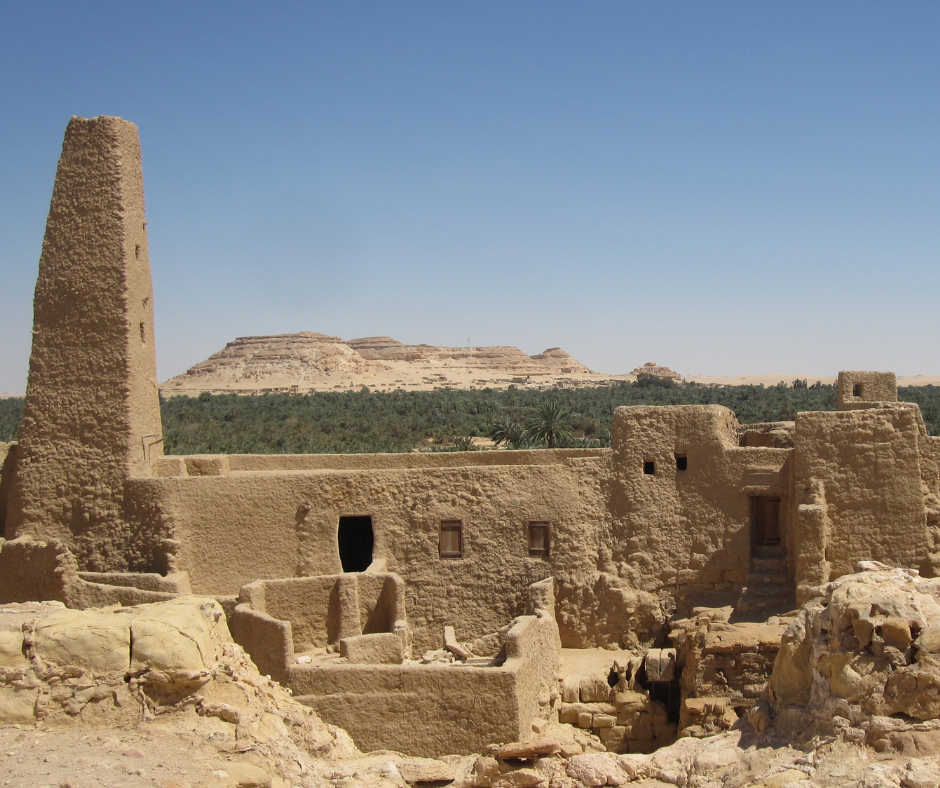
Another one of Siwa’s attractions is the ‘Mountain of the Dead’. This ominous sounding place is home to rock cut burials of the Greek and Roman periods of Egypt and although not as spectacular as the burials of the Valley of the Kings it is still interesting to see how the upper class of this time were buried.
Tanis
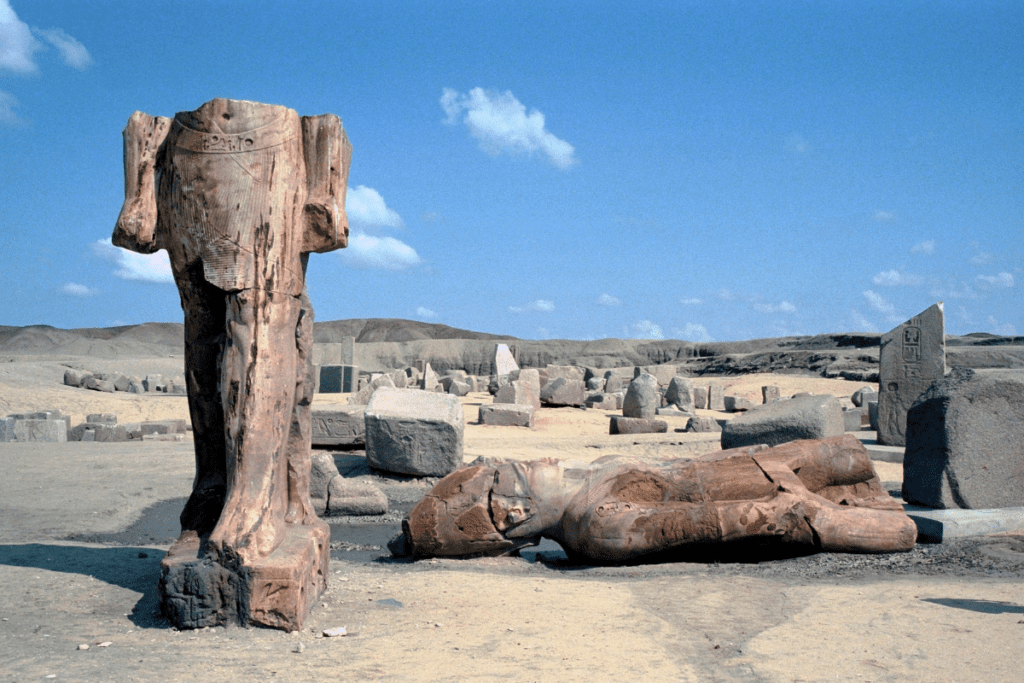
The archaeological site of the city of Tanis is located in the rarely visited Nile Delta area to the north of Cairo. Tanis makes this list as one of the most unique and unusual things to see in Egypt, because it is a city and not a tomb which is all that usually survives in the archaeological record in Egypt. In ancient Egypt, tombs or ‘houses of eternity’ were built to last forever, whereas the ancient Egyptians saw houses and cities as temporary fixtures. Tanis was the capital of Egypt in the 21st Dynasty and is located on the ‘Tanite’ branch of the Nile leading into the Mediterranean. The capital was moved from the capital established by Ramses the Great ‘Pi-Ramsses’ after the Pelusiac branch of the Nile silted up and the harbor in the city became unusable.
Among the ruins of Tanis today are a number of temples, including the chief temple to Amun and an important necropolis of the third intermediate period. A period of chaos and instability after the fall of the New Kingdom, the golden age of ancient Egypt.
This necropolis presents us with the only intact royal burial ever discovered in Egypt. The tomb of Tutankhamen was in fact disturbed in antiquity. The tombs of Psusennes I, Amenemope and Shoshenq I survived the ravages of tomb robbers and were discovered in 1939 and 1940. The tombs contained a large amount of gold, jewellery and of course the death masks of these pharaohs.
A man-made or ‘sacred lake’ lined with limestone blocks has also been found at the Temple of Mut. The lake is fifteen metres in length, is located twelve metres underground and is in good condition. Satellite archaeological survey has revealed the existence of mudbrick houses, walls, streets and large residences located around thirty metres below the surface which assures us that Tanis still has much, much more to offer.
Abydos
This site of Abydos, located in middle Egypt is one of the country’s most ancient places. Steeped in myth and legend it was the cult centre for the god Osiris. One of Egypt’s most famous stories was that Osiris along with his wife Isis ruled Egypt’s as the first king and queen. Osiris’s brother, Seth the god of chaos and the desert was jealous and plotted to steal the throne from his brother. He tricked Osiris into a magic box and then threw it in the Nile, where Osiris drowned. For good measure, Seth fished the box out of the Nile and then dismembered his body, scattering the pieces around Egypt. Abydos is where his head apparently landed. His wife Isis, who was the goddess of magic brought Osiris back to life long enough to conceive a child, Horus. She hid Horus from Seth until he was old enough to take on his uncle. Seth was banished to the desert; Horus became king and Osiris who couldn’t be resurrected became god of the dead.
At Abydos you can see the strange and enigmatic ‘Osirion’ which was built below ground level and is currently partially beneath the water table. Archaeologists do not know the purpose of this temple, however it is likely that it functioned as a cenotaph or ceremonial tomb for Osiris who was supposedly the first king of Egypt. The theory is that the temple was built below ground level to be closer to the realm of the god of the dead.
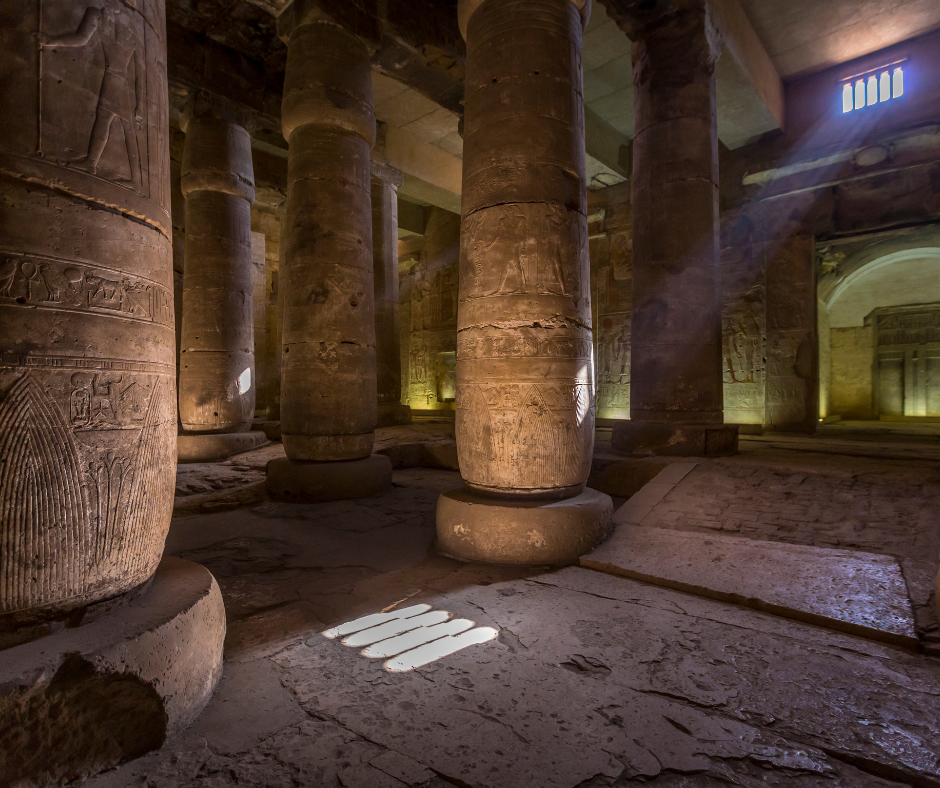
The most spectacular site at Abydos is the temple of Seti I. The temple is unique in that it differs from a usual ancient Egyptian temple plan and follows and ‘L shape’ rather than a straight design. The temple contains monumental pillars and displays a list of the kings of Egypt in chronological order. This list has played a vital role in assisting archaeologists in dating the reigns of certain kings. Interestingly certain kings such as Akhenaten and Hatchepsut who were considered troublemakers and heretics and not worthy of remembrance were left off the list.
Al Minya
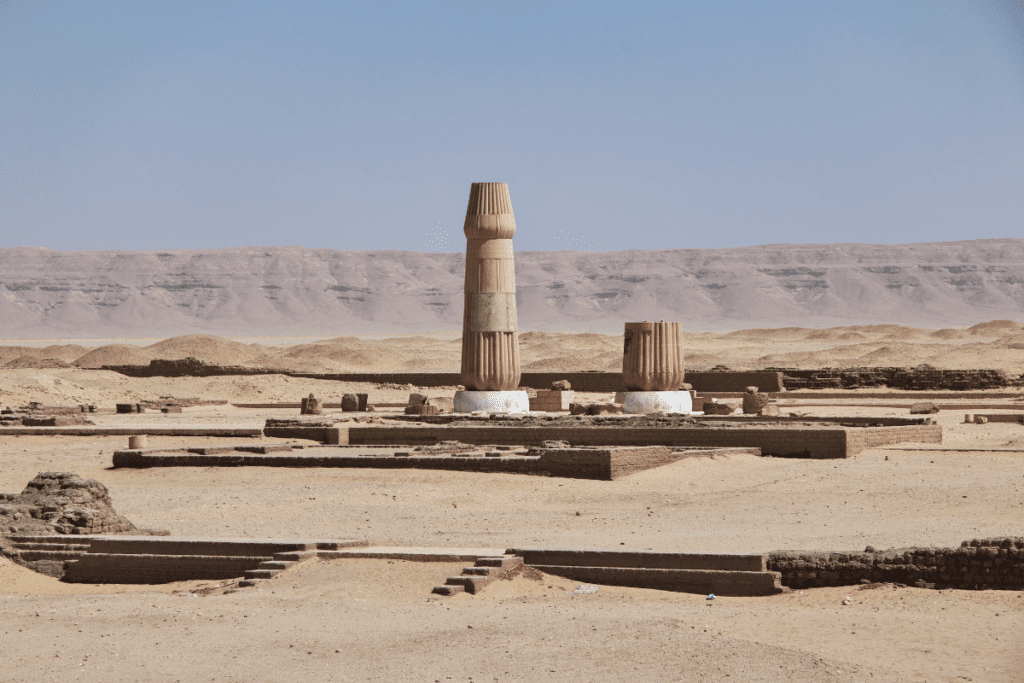
The site of Al Minya represents a unique and unusual part of Egyptian history. At the height of Egypt’s golden age, the pharaoh Amenhotep IV, changed his name to Akhenaten and changed Egypt’s religion from pantheistic to monotheistic and only worshipping the god, Aten. He moved Egypt’s capital from its traditional seat at Thebes (modern day Luxor) out into a site in the middle of the desert which he called, Akhetaten or ‘Horizon of the Aten’.
The site wasn’t inhabited for very long and on Akhenaten’s death was moved back to Thebes by Tutankhamen. Today, you can walk the deserted streets of Akhetaten’s lost city in the desert.
Nearby, you will find the rock-cut tombs of Akhetaten’s royalty and officials. Unlike the tombs of the Valley of the Kings, the tombs of Akhetaten are covered with pictures of the royal family worshipping the Aten. Only the king and his family were allowed to worship the Aten and everyone else had to worship the king. Interestingly, the tombs at Akheaten follow a straight design, as they were mean to allow the sun’s rays to shine directly on the sarcophagus.
Previous tombs in the Valley of the Kings had, up until this point, been constructed as a labyrinth of underground passageways. After the abandonment of Akhetaten, tomb construction returned to the Valley of the Kings, but continued in a straight design.
Serabit Khadim
Serabit Khadim was a mining site located deep within the Sinai Peninsula. It was established as a turquoise mine in the middle kingdom and was visited by almost every subsequent pharaoh. In the New Kingdom, the mines were worked by prisoners of war mainly from Canaan (modern-day Israel and parts of Jordan) and if you look closely you can still see some of the graffiti left by prisoners.
Pharaohs would erect a ‘stela’ to commemorate their visit to the Sinai area celebrating their mining expeditions in Sinai. In the 12th dynasty a temple to the goddess Hathor was also erected to pay homage to the goddess of turquoise. The temple was subsequently enlarged in the New Kingdom by both Hatchepsut and Thumose III and a shrine added to the god of the Eastern Desert Sopd. A garrison was also erected here as the Bedouin who are native to this area had started raiding and attacking the mining camps. The temple is the largest and most important in Sinai. This temple can still be visited today, along with some of the stela erected by various pharaohs.
Serabit Khadim is one of Egypt’s most unique and unusual things to see and is quite hard to get to. The Sinai area in general, except for the tourist resorts of Sharm el Sheikh and Dahab, is far less touristy than the rest of the country. The only way to get to Serabit Khadim is to trust a local taxi, who may or may not be willing to take you there or to go with a tour operator.
West Bank
Serabit Khadim is one of Egypt’s most unique and unusual things to see and is quite hard to get to. The Sinai area in general, except for the tourist resorts of Sharm el Sheikh and Dahab, is far less touristy than the rest of the country. The only way to get to Serabit Khadim is to trust a local taxi, who may or may not be willing to take you there or to go with a tour operator.
Medinet Habu: Known locally as the ‘Habu Temple’, Medinet Habu was built as the mortuary temple of Ramses III. It is quite different to other mortuary temples because it is built in the style of a fort or military fortification. Ramses III spent most of his reign at war, fighting off a group of roving marauders called the ‘Sea Peoples’ who were almost solely responsible for the collapse of most civilisations at this period in history. Thanks to the efforts of Ramses III Egypt survived, although just barely and was never quite the same again. The pharaoh must have spent so much of his life at war, that he meant to continue the fight in the afterlife. In addition to the architecture of the temple, the walls are covered with scenes from his battles with the Sea Peoples including the names of the groups represented. This one temple provides historians with much of the evidence for who these mysterious people were and where they came from. The origin and motives of the Sea Peoples is still one of history’s great mysteries.
The Ramesseum: Located close to Medinet Habu, the Ramesseum is the epic mortuary temple of Ramses the Great. The temple partially collapsed in antiquity and today its fallen statues present us with a scene that is one of the most iconic of Egypt’s most ancient past. It beggars’ belief (to us anyway) why no one ever seems to be here! The temple has fascinated scholars and artists since it was discovered during Napoleon’s invasion of Egypt in 1798. The engineers who surveyed the temple at this time referred to it as ‘the tomb of Ozymandias’ and it was here the poet Percy Bysse Shelly was inspired to pen his famous Ozymandias sonnet by the shattered statue of Ramses that lies on its side in the courtyard.
Deir el Medina: This site is the village of the workers and artisans who built the tombs in the Valley of the Kings. As we know, it is unusual for vestiges of daily life in Egypt to survive because the Egyptians believed these places were temporary, only the afterlife was permanent. Today you can stroll through the streets and passed the houses and workshops of those who toiled on the pharaohs ‘houses of eternity’ and gain a snapshot of what it must have been like to be an ordinary person in ancient Egypt.
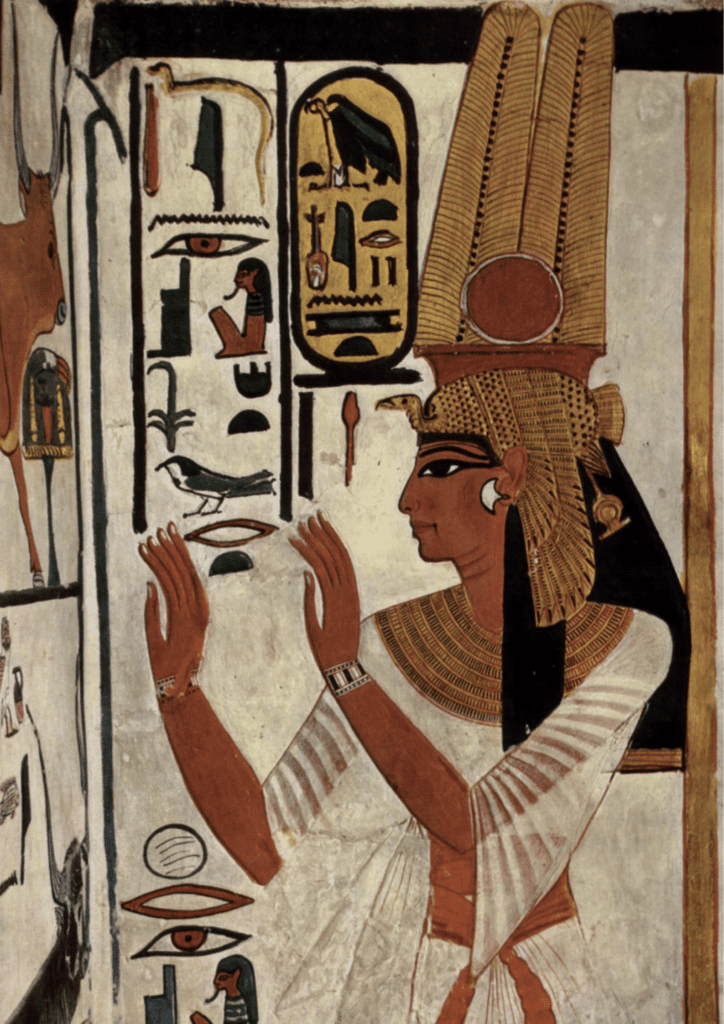
Nobles Tombs: Located in a cliff face near Deir el Medina are the tombs of the Nobles who served the pharaohs of the New Kingdom. In the New Kingdom, Egyptian religion had been democratised meaning the afterlife, which had previously only been available to the king, was now available to everyone. These tombs represent Egypt’s upper class and although religion had been democratised, they show scenes from their daily lives serving the pharaoh rather than scenes from the Book of the Dead.
Tombs of the Workers: Located in another cliff face in the west bank are the tombs of the workers who toiled away on the kings’ tombs. Unable to strictly afford tombs of their own, workers would often trade skills with each other. For example, one worker would hollow out a space for a tomb of a colleague or friend who was an artist, in exchange for that friend painting his tomb. Although much, much smaller than the tombs of the nobles, the tombs of the workers are some of the most colourful in Egypt. They also display scenes from the daily lives of the common man and show the occupants ploughing the ‘field of reeds’ in the afterlife – which was the equivalent of the common man’s heaven.
Faiyum Oasis
The Faiyum oasis is a basin in the desert just southwest of Cairo and is one of the oldest inhabited places in Egypt. A visit to the Faiyum oasis is one that is varied, with many different attractions. The town of Tunis located in the Faiyum is said to be one of Egypt’s most beautiful and a stroll through the streets is a great way to spend your time, other than looking at archaeological ruins.
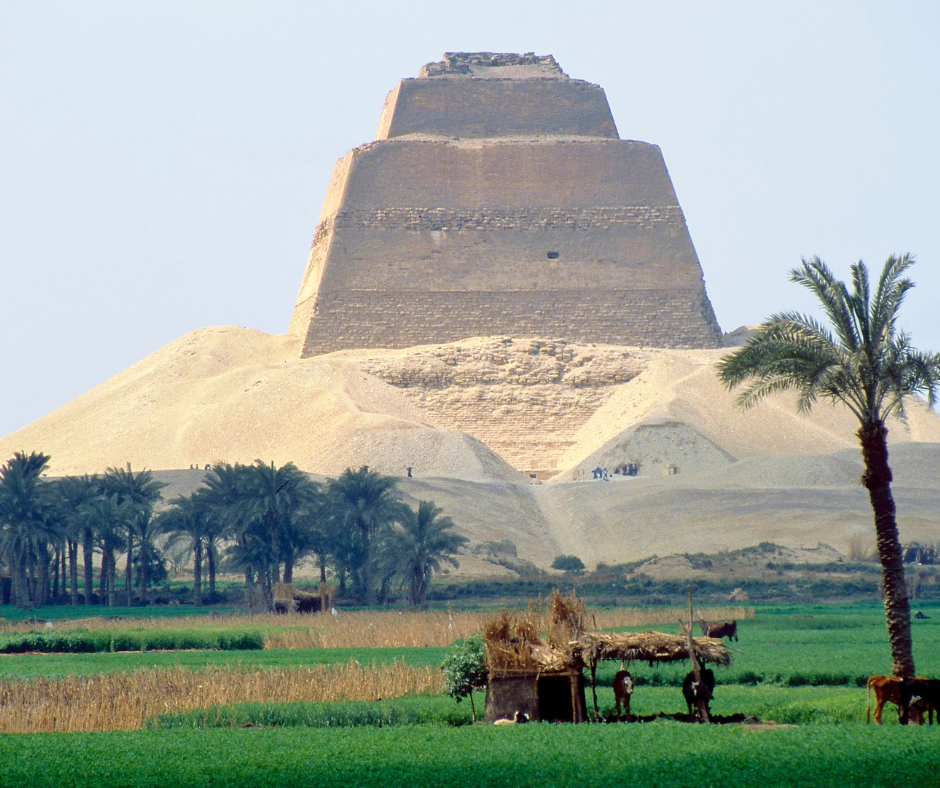
The Faiyum is also the closest town to Wadi el-Hitan or as it is more widely known, the ‘Valley of the Whales’. Wadi el-Hitan contains fossilized species of sub-whale, which demonstrate the whales evolutional journey as a ocean based mammal. Some of the remains are so well preserved that the food in the stomach of the whales can even be seen. The site also contains fossils of turtles, crocodiles, sawfish and rays giving us a complete overview of this prehistoric ecosystem. For this reason, it is a UNESCO World Heritage Site.
The Faiyum is also know for its spectacular natural beauty. Wadi el-Rayan is worth a visit with its amazing waterfall and makes a good picnic spot for both locals and travellers alike.
One of the Faiyum’s most amazing attractions is the pyramid of Meidum. Originally dated to the reign of Snefru, the builder of the Bent and Red Pyramids, the pyramid was eventually escribed to King Huni, Snefru’s father. The pyramid is now partially collapsed. Like the Bent Pyramid the gradient was far too steep causing the outer casing of the pyramid to slip into piles of rubble with a rather eerie looking tower protruding.
Dendera
By far one of the most stunningly beautiful temples in Egypt, the Temple of Hathor at Dendera is located approximately 80km north of Luxor. Owing to its out of the way location, this stunning temple is often missed by regular travellers to Egypt. The main temple was built during the Ptolemaic (Greek period) and unlike other temples in Egypt, the paint is still preserved. The temple contains one of the earliest representations of the zodiac and also contains the so-called ‘Dendera light’ a depiction of what appears to be a light bulb, plugged in with a snake inside. A depiction which has fascinated and drawn much conjecture from academics for many years.
The temple was added to in Roman times and shows depictions of emperors such as Trajan in traditional pharaonic regalia making offerings to the gods of Egypt. The temple also shows Cleopatra and her son by Julius Caesar making offerings to the gods. The lower part of the temple contains a crypt in which vessels and divine iconography were stored.
Owing to its remarkable state of preservation, travellers can actually access the mezzanine level of the temple and were allowed up onto the roof until 2003 when this part of the temple was closed to visitors.
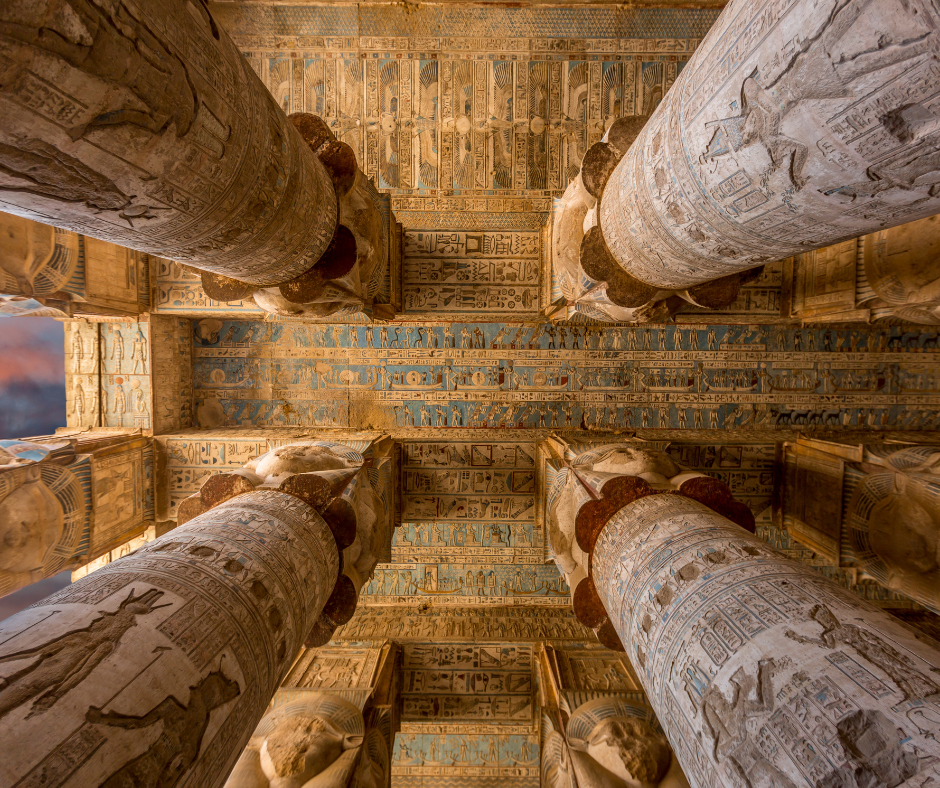
Can I visit these Unique and Unusual things to see in Egypt?
In getting to the unique and unusual site of Egypt, while well worth it, caution is to be advised. While all of these sites are worth the trip, some of them will require special government permission to visit or at the very least to navigate the multitude of check points in middle Egypt. Notable examples of this are Abydos and Al Minya. Special government permission is usually required to visit the site of Serabit Khadim in Sinai – by going on a tour you won’t need to navigate the mess of red tape and sometimes shady dealings (which are unfortunately part of Egypt’s culture) that often take place in on a journey to these amazing places.
For more information or to book one of our amazing tours to Egypt drop us a line at info@invertedatlas.com or call +61 (2) 7229 1926.




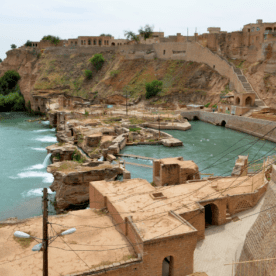
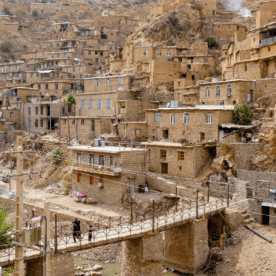
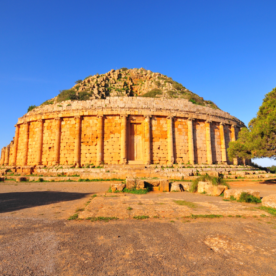
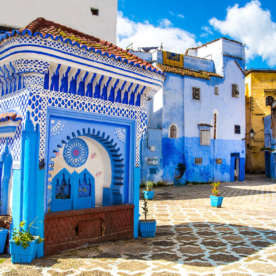
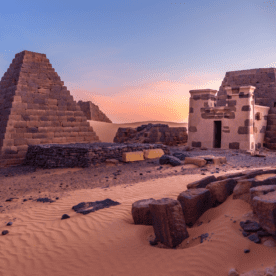
Leave a Reply